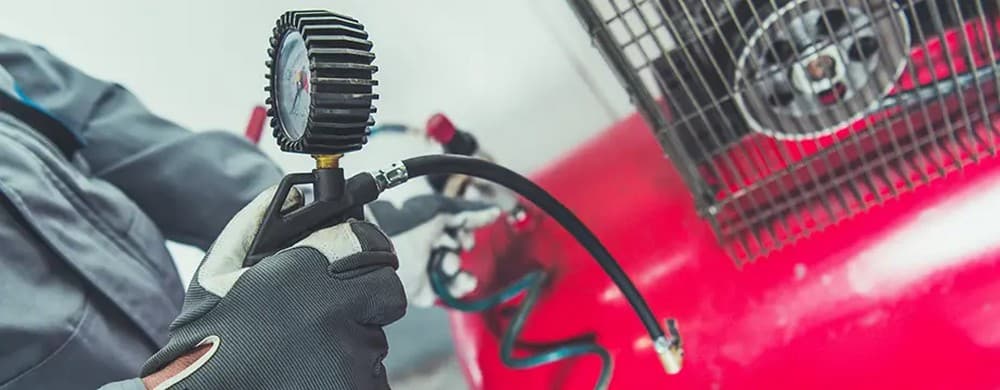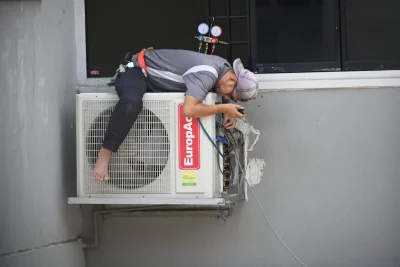
We rarely give thought to the very atmosphere that surrounds us, the invisible medium that sustains life. It’s only when it becomes thin, stale, or absent that its crucial role becomes starkly apparent. Similarly, in the world of industry and technology, compressed air often operates behind the scenes, an unnoticed yet vital force. Fluid aire dynamics understands this dependence intimately, recognizing that when this seemingly ubiquitous resource falters, the repercussions can be immediate and significant. Like the air we breathe, compressed air is often taken for granted until its absence creates an urgent crisis.
Industrial Muscle: The Power of Compressed Air
Across a vast spectrum of industrial endeavors, compressed air serves as a fundamental power source. In manufacturing plants, it drives pneumatic tools like drills, grinders, and automated assembly lines, increasing efficiency and precision. Within the construction sector, it powers heavy-duty equipment such as jackhammers and nail guns, enabling rapid progress. The automotive industry relies heavily on compressed air for paint spraying, robotic welding, and operating various machinery in production facilities. This widespread reliance underscores the critical role of a consistent and reliable compressed air supply for maintaining productivity and avoiding costly interruptions.
Critical Air: Lifeblood in Specialized Sectors
Beyond general industry, compressed air plays an indispensable role in sectors where its availability directly impacts safety and well-being. In healthcare facilities, meticulously filtered compressed air powers ventilators, anesthesia machines, and surgical instruments, representing a literal lifeline for patients. The air compressor for food industry demands the highest standards of cleanliness, ensuring that compressed air used in packaging, processing, and transporting food products is free from contaminants that could compromise safety and quality. The absence of reliable compressed air in these critical applications can have severe and immediate consequences.
Examples of Compressed Air Applications:
- Manufacturing: Powering pneumatic cylinders in automated assembly, operating robotic arms, air-powered conveyors, sandblasting for surface preparation.
- Construction: Operating pneumatic drills and hammers, powering spray guns for painting and coatings, inflating tires on heavy equipment.
- Automotive: Powering paint sprayers in body shops, operating air-powered lifts, inflating tires, powering pneumatic tools in assembly lines.
- Healthcare: Driving ventilators and anesthesia machines, powering dental drills, operating pneumatic surgical tools, providing air for patient breathing apparatus.
- Food Industry: Powering automated packaging machinery, operating pneumatic sorting systems, cleaning equipment with air blasts, transporting certain food items.
Subtle Signals: Recognizing System Distress
Compressed air systems, while robust, are not immune to wear and tear. Paying attention to subtle shifts in their operation can provide early warnings of impending issues. Unusual or escalating noise levels emanating from the compressor unit may indicate internal component problems. Noticeable leaks in hoses or fittings signify a loss of efficiency and potential pressure drops. Fluctuations in the delivered air pressure can disrupt downstream processes and signal compressor malfunction. An increase in the operating temperature of the compressor can point to overheating and potential failure. Regular monitoring for these seemingly minor deviations can prevent more significant breakdowns, potentially avoiding the urgent need to repair air compressor service.
The Ripple Effect: Consequences of System Failure
When a compressed air system unexpectedly fails, the repercussions can extend far beyond a single malfunctioning machine. In a manufacturing environment, a loss of compressed air can bring entire production lines to a standstill, resulting in missed deadlines and significant financial losses. Hospitals relying on compressed air for critical medical equipment face immediate and potentially life-threatening situations. Even smaller operations that depend on pneumatic tools can experience substantial downtime and decreased productivity. The interconnected nature of many industrial processes means that a seemingly isolated compressed air failure can trigger a cascade of delays and disruptions, highlighting the critical need for swift action from a provider of shop air compressor repair.
Investing in Uptime: The Power of Proactive Care
The adage “an ounce of prevention is worth a pound of cure” holds particularly true for compressed air systems. Implementing a proactive maintenance schedule is a far more economical and efficient approach than reacting to emergency breakdowns. Regular inspections can identify and address minor issues before they escalate. Routine filter changes ensure air quality and prevent contamination.
Consistent oil checks maintain proper lubrication and prolong compressor life. Comprehensive leak detection surveys can identify and rectify energy-wasting leaks. Partnering with experienced professionals like Fluid Air Dynamics for tailored maintenance plans ensures optimal system performance, minimizes the risk of unexpected failures, and maximizes operational uptime.
Conclusion
Like the very air we breathe, compressed air often operates in the background, its vital role largely unnoticed until its absence brings operations to a standstill. From powering the tools of industry to sustaining critical processes in healthcare and the food sector, this seemingly invisible utility underpins a vast array of essential functions.
The subtle signs of a faltering system serve as crucial warnings, indicators that proactive care is needed to avert costly and disruptive failures. Ignoring these whispers inevitably leads to the urgent clamor for repair air compressors service, a scenario marked by increased costs and operational strain. By recognizing the unseen necessity of compressed air and prioritizing preventative maintenance, we can ensure a consistent and reliable supply, avoiding the costly and disruptive consequences that arise when we only notice air once it’s gone.








